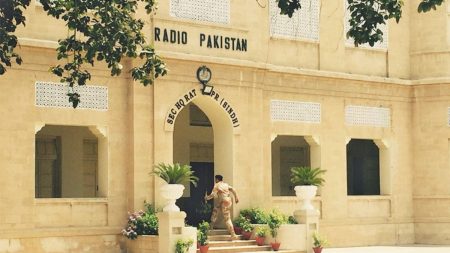Islamabad, Mar 12, 2025: Global credit rating agency Moody’s has upgraded its outlook for Pakistan’s banking sector from stable to positive, attributing this shift to the sector’s strong financial performance and an improving macroeconomic landscape compared to last year’s challenges.
According to Moody’s, this positive revision aligns with the country’s overall economic outlook, as Pakistani banks hold significant exposure to sovereign risk through large investments in government securities, which constitute nearly half of total banking assets.
Despite this progress, Moody’s cautioned that Pakistan’s long-term debt sustainability remains a pressing issue due to fiscal weaknesses and heightened vulnerability to liquidity and external pressures.
Economic growth projections have improved notably, with Moody’s forecasting a 3% expansion in 2025, rising from 2.5% in 2024 and recovering from a 0.2% contraction in 2023.
Inflation is also expected to decline sharply, reaching approximately 8% in 2025 compared to the 23% average recorded in 2024.
The report indicates that problem loan formation is likely to decelerate as borrowing costs and inflation ease.
Read More:
Govt Plans Major Crackdown on Sugar Sector Tax Evasion
However, net interest margins may narrow due to anticipated interest rate reductions.
Despite these changes, moderate loan growth and strong cash flow generation support banks in maintaining adequate capital reserves, even with high dividend payouts.
The government’s strengthened liquidity position and a more stable external environment compared to 2024 primarily improve the banking outlook.
Moody’s also emphasized the significance of the 37-month, $7 billion IMF Extended Fund Facility, approved in September 2024, as a reliable external financing source for Pakistan in the coming years.
Looking ahead, Moody’s predicts GDP growth will reach 4% in 2026, building on the expected 3% expansion in 2025.
The 10-percentage-point reduction in interest rates since monetary policy easing began in June 2024 has partly driven this economic momentum.
Moody’s stated that lower inflation and reduced policy rates will encourage private-sector investment and consumer spending in Pakistan, which are currently at subdued levels.
The report also highlighted potential risks, pointing out that as of September 2024, government securities accounted for 55% of banks’ total assets.
“This extensive exposure ties the credit stability of banks to the sovereign, which is gradually improving from previously weak levels,” the agency explained.
Problem loans have risen to 8.4% of total loans as of September 2024, up from 7.6% a year earlier. However, since overall loans constitute only 23% of total banking assets, the impact of this increase remains limited.
With the elimination of the ADR tax for 2025, Moody’s expects reduced pressure on banks to boost lending, while credit demand is likely to remain moderate despite lower interest rates.
This revision follows Moody’s November report, which previously warned that Pakistan’s interest expenses would consume nearly 40% of total government expenditures in 2025, a sharp rise from 25% in 2021.









